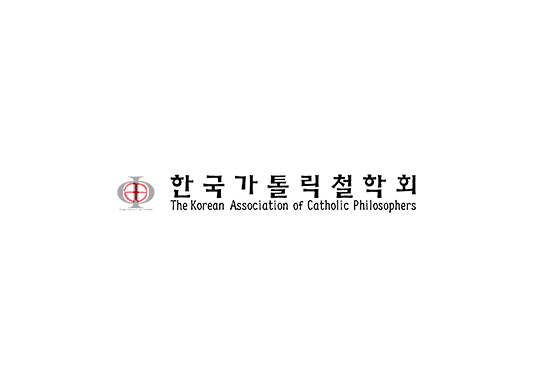칸트의 인과성 개념에 대한 비판적 고찰
Critical Consideration of Kant’s Concept of Causality
박제철
서울시립대학교
가톨릭철학
2020, vol., no.35, pp. 73-106 (34 pages)
한국가톨릭철학회
1. 서론
2. 인과성
3. 표기법
4. 인과성에 대한 여러 해석들
5. 인과성 개념에 대한 1차적 구분
6. 인과성 개념에 대한 2차적 구분
7. 인과성에 대한 흄의 이론
8. 인과적인 것 vs. 인과적이지 않은 것
9. 논리적 분석
10. 인과성에 대한 칸트의 이론
11. 칸트의 오류
12. 결론
초록
본 논문에서 필자는 인과성 개념에 대한 흄의 이론을 옹호하고, 이 이론에 대한 칸트의 대안 이론을 비판하고자 한다. 인과성에 대한 흄의 입장은 다음과 같다. 시⋅공간적으로 인접한 사건 쌍이 계속 반복적으로 패턴을 이루며 발생할 경우, 그 경우 우리는 그러한 사건 쌍이 인과적이라고 추론한다는 것. 인과성에 대한 흄의 이러한 분석을 이해하고 나면, 인과적 사건 쌍과 비인과적 사건 쌍을 구분해 낼 수 있는 기준이 생기게 된다. 그 기준이란 바로 반복적 패턴을 이루는가, 패턴을 이루지 못하는가 하는 것이다.
칸트는 흄이 하고 있는 이러한 작업을 하고 있지 못하다. 그는 인과적 사건 쌍과 비인과적 사건 쌍을 구분해 내지 못한다. 그리고 이 두 사건 쌍을 구분해 내지 못하는 이유는 칸트가 시간적 선ㆍ후에 대한 파악이 가능하기 위해서는 인과관계가 적용되어야 한다고 주장하기 때문이다. 까마귀가 날고, 배가 떨어어진 사건에 인과법칙을 적용하지 않으면, 어느 사건이 먼저인지를 파악할 수 없다는 것이 칸트의 주장이다. 그런데, 우리가 시간 순서를 정하기 위해 이 두 사건에 인과법칙을 적용하면, 이 두 사건은 인과적으로 연결되게 된다. 까마귀가 난 사건이 원인이 되고, 배가 떨어진 사건이 결과가 되는 것이다. 이 두 사건 사이의 시간적 선ㆍ후에 대한 파악을 포기할 것인가, 아니면 이 두 사건 사이에 억지로 인과성을 부여할 것인가? 칸트가 이런 딜레마적 상황에 놓이게 된 것은 그가 인과성을 잘못 이해하기 때문이다. 인과성에 대해 칸트는, 어떤 경우 우리가 두 사건을 인과적인 것으로 보는가에 초점을 맞추지 않는다. 칸트는 인과성에 대해 다음과 같이 이해하는 것이다. 즉 “모든 사건들은 원인을 가진다.” 이렇게 접근하게 되면, 어떤 사건 쌍은 인과적이고, 어떤 사건 쌍은 그렇지 않은지를 가려낼 수 없다. 칸트는 자신의 기획을 완성하기 위해(코페르니쿠스적 전환) 인과성에 대한 분석을 시도하지만, 결국 실패하는 것으로 보인다.
In this paper, I advocate Hume’s theory of causality and criticize Kant’s alternative theory of this theory. Hume argues that if pairs of spatio-temporally adjacent events occur repeatedly in a pattern, we infer that the pairs are causal. Once you understand Hume’s analysis of causality, you have a standard for distinguishing between causal and non-causal event pairs. The criterion is whether a pattern is formed repeatedly or not.
Kant is not doing the work that Hume is doing. He cannot distinguish between a causal event pair and a non-causal. And the reason why these two pairs of events cannot be distinguished is that Kant insists that a causal relationship must be applied in order to be able to grasp the temporal order. Kant’s argument is that if the law of causality is not applied to the case where the crow flies and the pear falls, it is impossible to determine which event comes first. However, if we apply the causal law to these two events to determine the temporal order, the two events are causally linked. The crow event is the cause, and the pear event is the result. Will we give up the understanding of the temporal order between the two events, or will we force the causality between the two events? Kant was placed in this dilemma because he misunderstood causality. When it comes to causality, Kant does not approach the case in which we see both events causally. His approach to causality begins with the understanding that “all events have a cause.” With this approach, it is impossible to identify which event pair is causal and which event pair is not. Kant tries to analyze causality to complete his project, but eventually fails.

